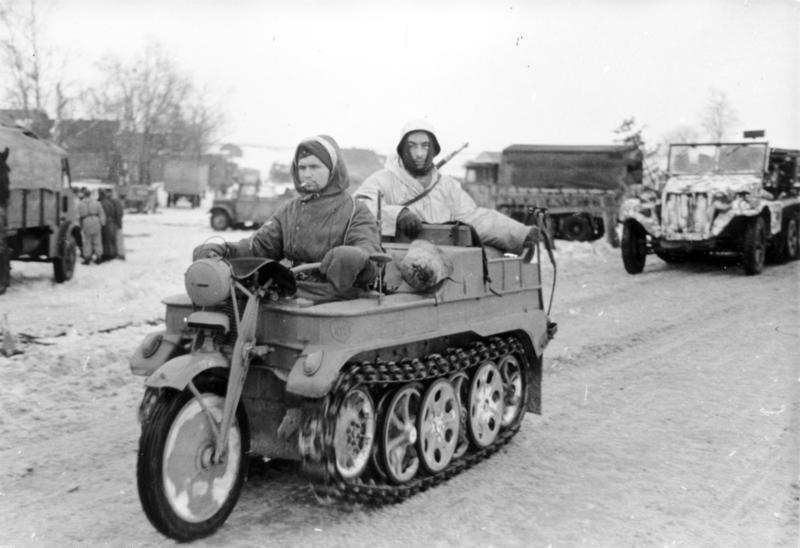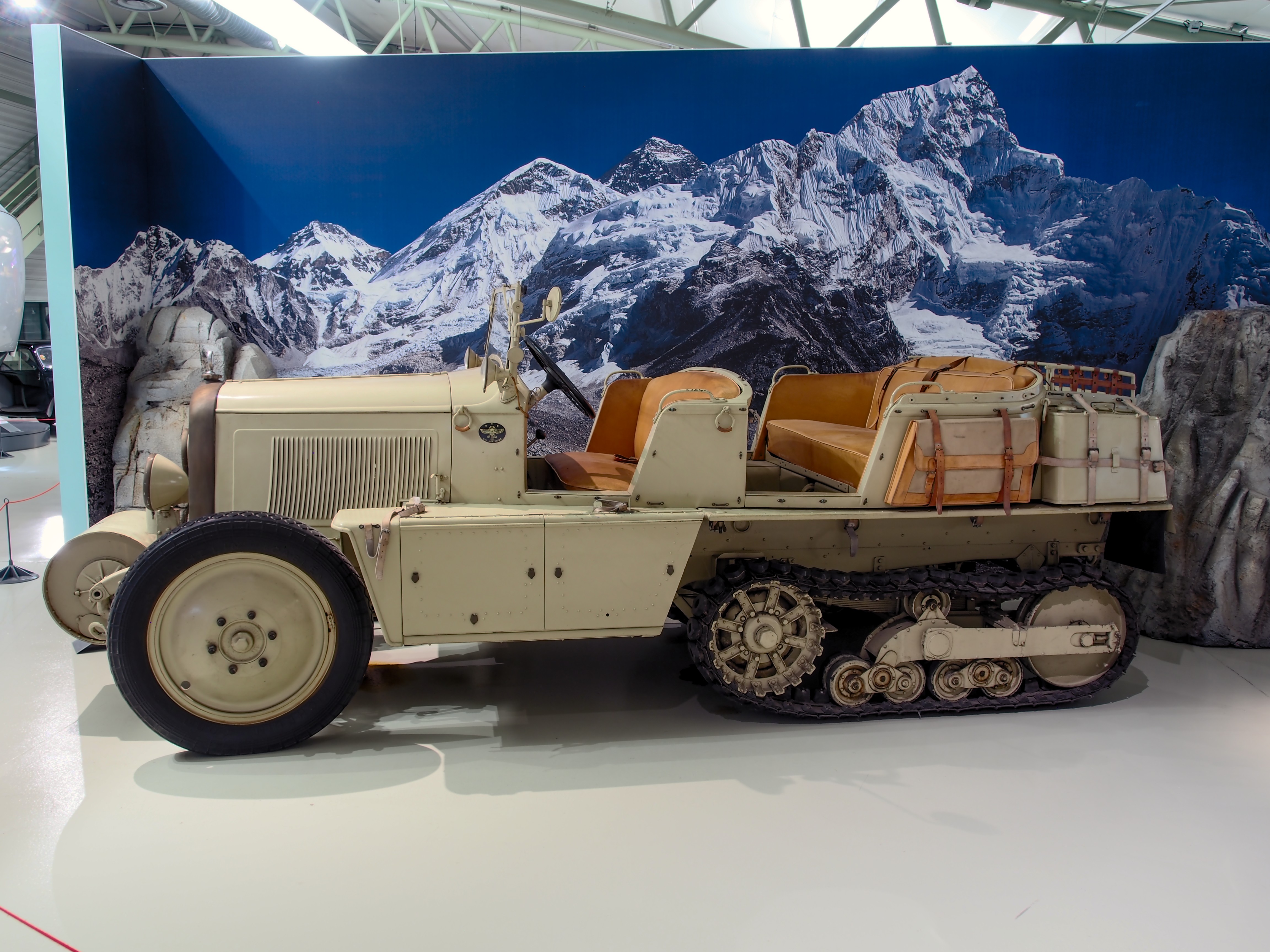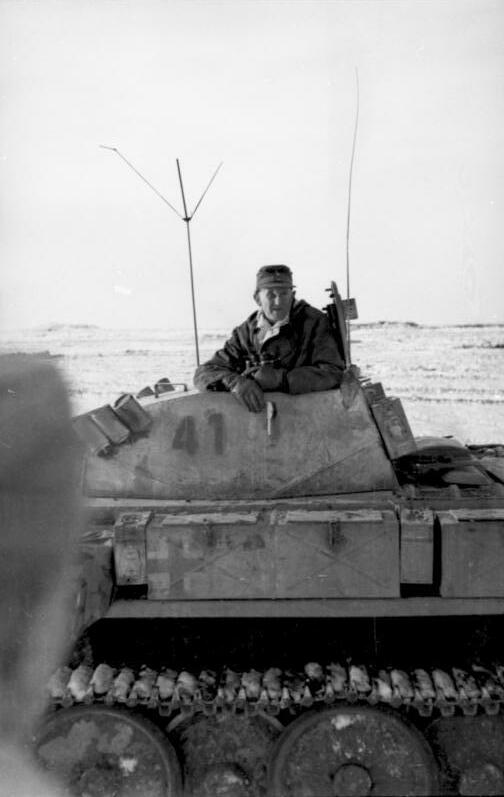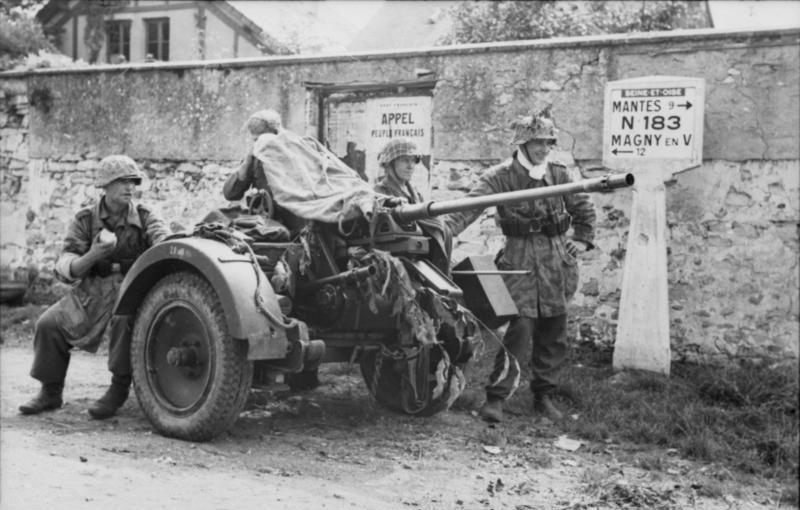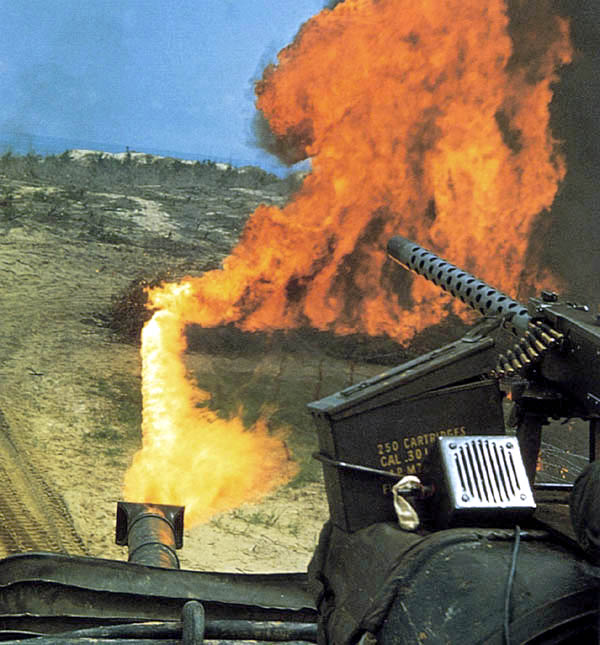|
Sd.Kfz.
''Sonderkraftfahrzeug'' (abbreviated ''Sd.Kfz.'', German for "special purpose vehicle") was the ordnance inventory designation used by Nazi Germany during World War II for military vehicles; for example ''Sd.Kfz.'' 101 for the Panzer I. Sd.Kfz. numbers were assigned to armored, tracked, and half-tracked vehicles in military service with Nazi Germany prior to and during World War II. Sd.Kfz. numbering system There were no strict rules regarding number series. For example, the Pz. Kpfw. II Ausf. L was designed and named as a reconnaissance vehicle, yet was placed in the 100-series rather than the 200-series. Overall, the vehicles were placed in these categories: *Sd.Kfz. 1 to 99: Unarmoured half-tracked vehicles *Sd.Kfz. 100 to 199: Tanks and tank variants, such as tank destroyers and self-propelled artillery *Sd.Kfz. 200 to 299: Reconnaissance vehicles, armoured cars, armored personnel carriers, and command tanks *Sd.Kfz. 300 and above: Mine-clearing and demolition charge laying ... [...More Info...] [...Related Items...] OR: [Wikipedia] [Google] [Baidu] |
Half-track
A half-track is a civilian or military vehicle with regular wheels at the front for steering and continuous tracks at the back to propel the vehicle and carry most of the load. The purpose of this combination is to produce a vehicle with the cross-country capabilities of a tank and the handling of a wheeled vehicle. Performance The main advantage of half-tracks over wheeled vehicles is that the tracks reduce the pressure on any given area of the ground by spreading the vehicle's weight over a larger area, which gives it greater mobility over soft terrain like mud and snow, while they do not require the complex steering mechanisms of fully tracked vehicles, relying instead on their front wheels to direct the vehicle, augmented in some cases by track braking controlled by the steering wheel. It is not difficult for someone who can drive a car to drive a half-track, which is a great advantage over fully tracked vehicles, which require specialized training. Half-tracks thus facil ... [...More Info...] [...Related Items...] OR: [Wikipedia] [Google] [Baidu] |
Marder II
The ''Marder'' II ("marten" in English) was a German tank destroyer of World War II based on the Panzer II chassis. There were two versions, the first mounted a modified Soviet 7.62 cm gun firing German ammunition, while the other mounted the German 7.5 cm Pak 40 gun. Its high profile and thin open-topped armor provided minimal protection to the crew. Nevertheless, the Marder II (and similar Marder III) provided a great increase in firepower over contemporary German tanks during 1942 and into 1943. Only four Marder IIs remain today. History During the first days of Operation Barbarossa, the invasion of the Soviet Union, the Germans came unprepared to encounter Soviet T-34 medium tanks and KV heavy tanks. Although the ''Wehrmacht'' succeeded in most operations due to superior tactics, air support and supply, the lack of anti-tank weapons capable of successfully engaging these vehicles at range was becoming evident. An urgent need arose for a mobile and powerful enough anti- ... [...More Info...] [...Related Items...] OR: [Wikipedia] [Google] [Baidu] |
Panzer I
The Panzer I was a light tank produced in Nazi Germany in the 1930s. Its name is short for (German for "armored fighting vehicle mark I"), abbreviated as . The tank's official German ordnance inventory designation was ''Sd.Kfz. 101'' ("special purpose vehicle 101"). Design of the Panzer I began in 1932 and mass production began in 1934. Intended only as a training tank to introduce the concept of armored warfare to the German Army, the Panzer I saw combat in Spain during the Spanish Civil War, in Poland, France, the Soviet Union and North Africa during the Second World War, and in China during the Second Sino-Japanese War. Experiences with the Panzer I during the Spanish Civil War helped shape the German Panzerwaffe's invasion of Poland in 1939 and France in 1940. By 1941, the Panzer I chassis design was used as the basis of tank destroyers and assault guns. There were attempts to upgrade the Panzer I throughout its service history, including ... [...More Info...] [...Related Items...] OR: [Wikipedia] [Google] [Baidu] |
Luchs (tank)
The Panzerkampfwagen II Ausf. L "''Luchs''" (German for lynx) is a German light tank from the Second World War, developed between 1940 and 1942 by Daimler-Benz and MAN. The ''Luchs'' was the only Panzer II design with the ''Schachtellaufwerk'' overlapping/interleaved road wheels and "slack track" configuration to enter series production, with 100 being built from September 1943 to January 1944 in addition to the conversion of the four Ausf. M tanks. Originally given the experimental designation VK 13.03, it was adopted under the alternate name ''Panzerspähwagen'' II and given the popular name ''Luchs''. The Luchs was larger than the Panzer II Ausf. G in most dimensions. With a six speed transmission (plus reverse), it could reach a speed of with a range of . The FuG 12 and FuG Spr radios were installed, while 330 rounds of 20 mm and 2,250 rounds of 7.92 mm ammunition were carried. History In the summer of 1938, German manufacturing firms Daimler-Benz and MAN began de ... [...More Info...] [...Related Items...] OR: [Wikipedia] [Google] [Baidu] |
Panzer II
The Panzer II is the common name used for a family of German tanks used in World War II. The official German designation was ''Panzerkampfwagen'' II (abbreviated PzKpfw II). Although the vehicle had originally been designed as a stopgap while larger, more advanced tanks were developed, it nonetheless went on to play an important role in the early years of World War II, during the Polish and French campaigns. The Panzer II was the most numerous tank in the German Panzer divisions at the beginning of the war. It was used both in North Africa against the Western Allies and on the Eastern Front against the Soviet Union. The Panzer II was supplanted by the Panzer III and IV medium tanks by 1940/1941. By the end of 1942, it had been largely removed from front line service and it was used for training and on secondary fronts. The turrets of the then-obsolete Panzer Is and Panzer IIs were reused as gun turrets on specially built defensive bunkers, particularly on the Atlantic Wall. Pr ... [...More Info...] [...Related Items...] OR: [Wikipedia] [Google] [Baidu] |
2 Cm Flak 30/38/Flakvierling
The Flak 30 (''Flugzeugabwehrkanone 30'') and improved Flak 38 were 20 mm anti-aircraft guns used by various German forces throughout World War II. It was not only the primary German light anti-aircraft gun but by far the most numerously produced German artillery piece throughout the war. It was produced in a variety of models, notably the Flakvierling 38 which combined four Flak 38 autocannons onto a single carriage. Development The Germans fielded the unrelated early 2 cm Flak 28 just after World War I, but the Treaty of Versailles outlawed these weapons and they were sold to Switzerland. The original Flak 30 design was developed from the Solothurn ST-5 as a project for the Kriegsmarine, which produced the 20 mm C/30. The gun fired the "Long Solothurn", a 20 × 138 mm belted cartridge that had been developed for the ST-5 and was one of the more powerful 20 mm rounds. The C/30, featuring a barrel length of 65 calibres, had a fire rate of about ... [...More Info...] [...Related Items...] OR: [Wikipedia] [Google] [Baidu] |
Maultier
Maultier (English: "mule") or Sd.Kfz. 3 is the name given to series of half-track trucks used by Germany during World War II. They were based on Opel, Mercedes-Benz, Alfa-Romeo or Ford trucks. History Soon after invading the USSR, German troops discovered that their wheeled transport vehicles were unsuitable for the sparse road network, particularly in the muddy conditions of the ''rasputitsa''. Only half tracks like the Sd.Kfz. 11 could haul supplies to forward units in these conditions, but removing them from their combat role for supply duties was not feasible, so it was decided to produce half-tracked versions of standard Opel, Daimler-Benz, Alfa-Romeo and Ford trucks (lorries) by removing their rear axles, truncating the prop-shafts and connecting them to redundant Panzer I track assemblies. Heavier trucks (4 tons payload) were fitted with Panzer II track assemblies. Horstmann suspension components employed by the Panzer I was practically identical to the light tank track s ... [...More Info...] [...Related Items...] OR: [Wikipedia] [Google] [Baidu] |
Flamethrower Tank
A flame tank is a type of tank equipped with a flamethrower, most commonly used to supplement combined arms attacks against fortifications, confined spaces, or other obstacles. The type only reached significant use in the Second World War, during which the United States, Soviet Union, Germany, Italy, Japan, and the United Kingdom (including members of the British Commonwealth) all produced flamethrower-equipped tanks. A number of production methods were used. The flamethrowers used were either modified versions of existing infantry flame weapons (Flammpanzer I and II) or specially designed (Flammpanzer III). They were mounted externally (Flammpanzer II), replaced existing machine gun mounts, or replaced the tank's main armament (Flammpanzer III). Fuel for the flame weapon was either carried inside the tank, in armoured external storage, or in some cases in a special trailer behind the tank (Churchill Crocodile). Combat effectiveness In comparison to man-portable flamethrower ... [...More Info...] [...Related Items...] OR: [Wikipedia] [Google] [Baidu] |
Continuous Track
Continuous track is a system of vehicle propulsion used in tracked vehicles, running on a continuous band of treads or track plates driven by two or more wheels. The large surface area of the tracks distributes the weight of the vehicle better than steel or rubber tires on an equivalent vehicle, enabling continuous tracked vehicles to traverse soft ground with less likelihood of becoming stuck due to sinking. Modern continuous tracks can be made with soft belts of synthetic rubber, reinforced with steel wires, in the case of lighter agricultural machinery. The more common classical type is a solid chain track made of steel plates (with or without rubber pads), also called caterpillar tread or tank tread, which is preferred for robust and heavy construction vehicles and military vehicles. The prominent treads of the metal plates are both hard-wearing and damage resistant, especially in comparison to rubber tyres. The aggressive treads of the tracks provide good trac ... [...More Info...] [...Related Items...] OR: [Wikipedia] [Google] [Baidu] |
76 Mm Divisional Gun M1936 (F-22)
The 76-mm divisional gun M1936 (F-22) was a Soviet divisional semi-universal gun, adopted for Red Army service in 1936. This gun was used in conflicts between the USSR and Japan on the Far East, in the Winter War and in World War II. Many F-22s were captured by the Wehrmacht, modernized by the Germans and used against Soviet forces. Description The F-22 was a semi-universal gun which combined the capabilities of a divisional gun and - to some extent - of an anti-aircraft gun. It had a split-trail carriage with suspension and steel wheels with rubber tires. The gun was equipped with a semi-automatic vertical sliding breech block; the recoil mechanism consisted of a hydraulic recoil buffer and a hydro-pneumatic recuperator. The sights and the elevation controls were located on different sides of the barrel. The chamber fitted the standard model 1900 cartridge, which meant that the gun could use ammunition of older 76.2-mm divisional and regimental guns. Development and production h ... [...More Info...] [...Related Items...] OR: [Wikipedia] [Google] [Baidu] |
Marder I
The ''Marder I'' "Marten" (Sd.Kfz. 135) was a German World War II tank destroyer, armed with a 75 mm Pak-40 anti-tank gun. Most Marder Is were built on the base of the ''Tracteur Blindé'' 37L (Lorraine), a French artillery tractor/armoured personnel carrier of which the Germans had acquired more than three hundred after the Fall of France in 1940. History From the early stages of Operation Barbarossa the Wehrmacht became aware that their ability to combat some of the Soviet tanks was inadequate. The lighter tanks then in general service, such as the Panzer II and the Czech built 38(t), were under-armoured and did not mount an adequate gun to deal with the newer Soviet tanks. In addition, the standard towed anti-tank gun of the Wehrmacht, the 37 mm 3.7 cm Pak 36, was both difficult to get into position quickly and lacked the ability to penetrate the heavy sloped armour of the new Soviet tanks. What was needed was a more powerful anti-tank gun that was mobile. The ... [...More Info...] [...Related Items...] OR: [Wikipedia] [Google] [Baidu] |
Wespe
The Sd.Kfz. 124 ''Wespe'' (German for "wasp"), also known as ''Leichte Feldhaubitze 18/2 auf Fahrgestell Panzerkampfwagen II (Sf.)'' ("Light field howitzer 18 on Panzer II chassis (self-propelled)"), is a German self-propelled gun developed and used during the Second World War. It was based on a modified Panzer II chassis. Development During the Battle of France in 1940 it became apparent that the intermediate tank of the German forces, the Panzer II, was unsuitable as a main battle tank. Though mechanically sound, it was both under-gunned and under-armoured. The chassis, however, proved serviceable for providing mobility to the 10.5 cm field howitzer. Existing chassis were converted to self-propelled artillery vehicles, such as the Marder II conversion providing mobility to the PaK 40/7.5 cm anti-tank gun. The design for the ''Wespe'' was produced by Alkett, based on the Panzer II ''Ausf. F'' chassis. Alkett had earlier worked with Alfred Becker to convert captured French arm ... [...More Info...] [...Related Items...] OR: [Wikipedia] [Google] [Baidu] |
